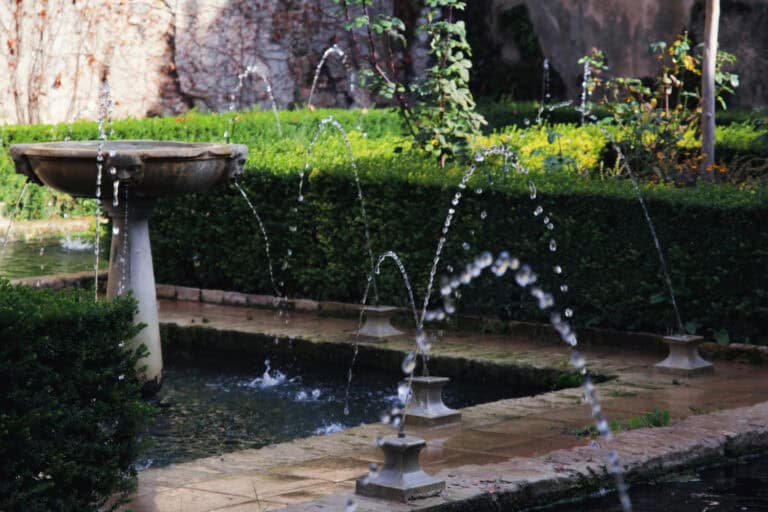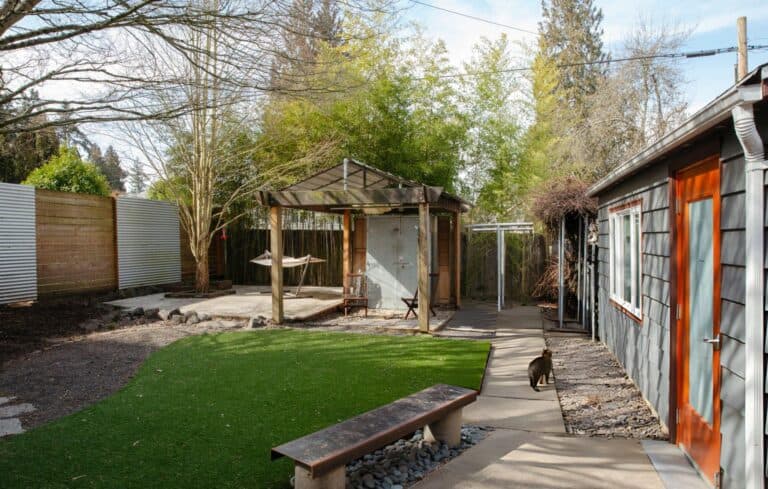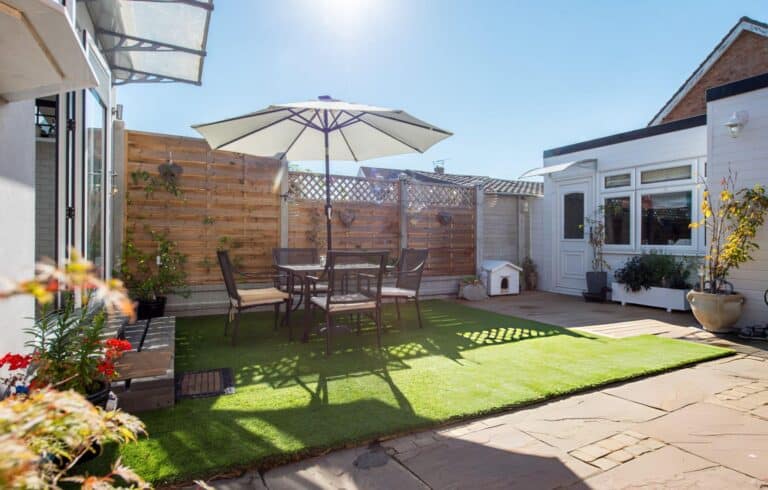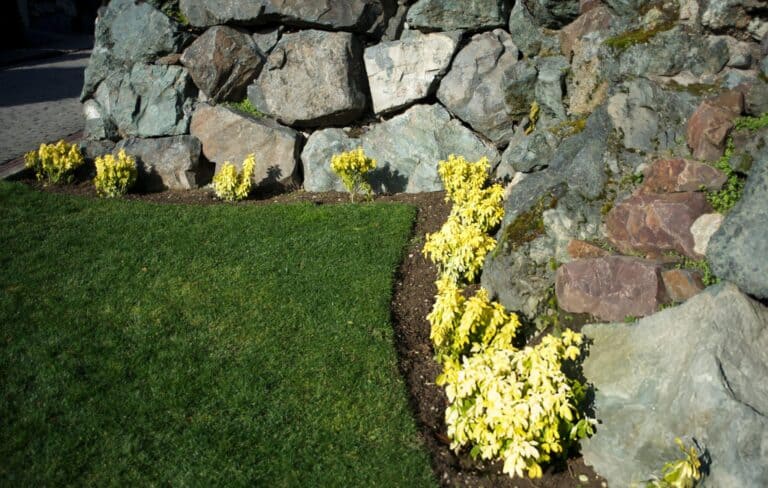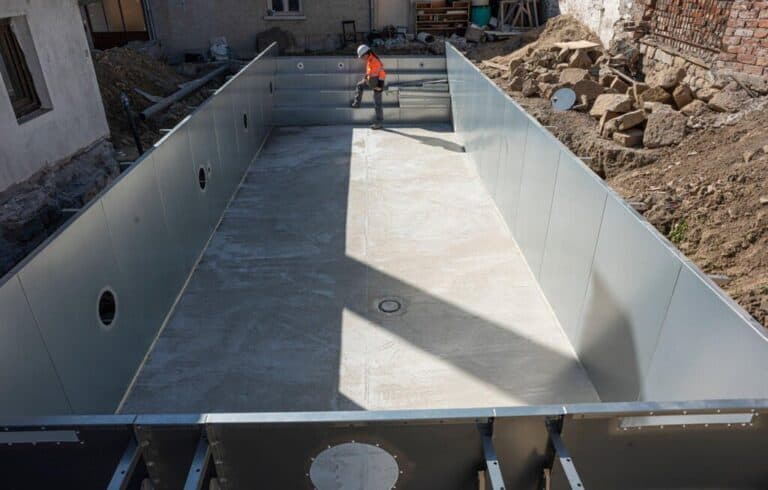Paver patios, walkways, and driveways add structure and style to any outdoor area. But time, weather, and wear can shift those once neat, level surfaces into uneven or wobbly paths. That movement doesn’t just affect how it looks — it can become a tripping hazard or lead to more costly repairs. The goal is to keep your pavers firmly in place for the long haul, so you can enjoy an outdoor space that feels solid underfoot and looks good for years to come.
Concrete and travertine pavers are popular options for outdoor hardscapes in Gilbert, AZ. Both materials hold up well under the Arizona sun but still need the right preparation and maintenance to avoid movement over time. August is typically dry and hot, which puts extra stress on the ground beneath your surfaces. If you’re planning a new patio or looking to restore an older layout, this is the best time to check how your pavers are holding up and learn what steps help maintain a stable foundation.
Causes of Paver Displacement
Seeing your pavers shift or tilt can be frustrating, especially after investing in a beautiful outdoor setup. There are a few common reasons why this happens, and catching these issues early can prevent the problem from getting worse.
– Weather conditions: Gilbert goes through wild temperature swings, especially in the summer. The heat can cause materials to expand and contract, making the ground under your pavers less stable. Sudden storms or irrigation leaks may also cause erosion if drainage isn’t handled well during installation.
– Soil movement: Some spots have loamy or sandy soil that’s more likely to shift throughout the year. If the sub-base wasn’t correctly compacted or set on a consistent foundation, the soil can settle unevenly, leading to dips or rising corners along the surface.
– Improper installation: If the base layer beneath your pavers wasn’t deep enough or lacked proper edging, the materials will eventually start sliding out of place. Even a slight oversight early on can snowball into visible movement over time.
– Weight and traffic: Heavy foot traffic or frequent use by vehicles might press down on certain areas more than others. Without the right structural support beneath, these spots can crack or sink faster, especially around driveways or edges.
It helps to think of pavers like puzzle pieces on a cushion. If the cushion shifts or gets pushed unevenly, the puzzle starts falling apart, which is exactly what happens when the base isn’t stable or gets disturbed.
Preventative Measures During Installation
From the very first layer to the final placement, careful groundwork makes all the difference. Laying your pavers correctly the first time is one of the best ways to avoid future movement or uneven surfaces.
Here’s what a strong install should include:
1. Proper ground prep: Start by excavating deep enough, usually around 6 to 8 inches depending on the project. This gives you enough room for the base materials.
2. Compact base layers: Crushed stone makes for a solid base, but it needs to be compacted in layers to stay stable. Skipping this step increases the chances of settling down the road.
3. Edge restraints: Plastic or metal edging, secured firmly into place, helps hold everything together. Without them, you risk the sides slowly shifting under heat or weight.
4. Even setting bed: A 1-inch layer of bedding sand can hold the pavers correctly before they’re tamped down. Any thick or uneven areas might cause certain pavers to end up loose.
5. Use of materials built for durability: Choosing materials like concrete and travertine pavers increases your chances of long-term success. These handle Arizona weather better than many other options and tend to stay in place if installed on a well-designed base.
Installing pavers isn’t just about lining up stones. Poor prep can lead to growth between joints, standing water, and sinking edges. Taking the time to build a compacted, level foundation makes the surface tougher and helps reduce movement even during hot summers or heavy monsoon rains.
Regular Maintenance Tips
After the installation is complete, regular upkeep plays a big role in preventing future paver movement. The hot, dry climate in Gilbert can be tough on outdoor surfaces, so a little consistency goes a long way in keeping things steady.
Start by making visual inspections part of your monthly yard check. Walk the area, feel for wobbly pavers, and scan for gaps forming between the stones. If one area is sinking or bulging more than others, these are early signs of soil shifts or drainage issues below the surface.
During the warmer months, especially through late summer when monsoon rains hit, it’s helpful to:
– Clear debris from joints so materials like leaves, dirt, or mulch don’t hold in extra moisture
– Refill joints with sand as needed to prevent erosion between pavers
– Watch for signs of pooling or standing water after heavy rains
– Avoid placing extra weight from stored items or parked vehicles on pavers that aren’t designed for it
When the weather cools down in fall, use that time to clean the surface and reset any disturbed stones. In many yards, sprinkler heads and runoff areas can push water toward the pavers unintentionally. Redirect that flow to make sure you’re keeping moisture away from your foundation.
If you spot weeds growing through the joints, don’t just pull them out. That can remove joint sand and leave more room for movement. Use a soft brush or air blower to keep joints clean without disturbing the fill. Staying ahead of these small tasks keeps your pavers looking and feeling solid, even after years of hot desert weather.
Professional Solutions for Long-Term Stability
Sometimes the shifting goes past what can be managed with basic inspections. When pavers show deeper movement or constant shifting, it usually points to a bigger issue happening underneath. That’s when professional help becomes the smarter route.
A trained crew will look beyond the surface and assess the root of the problem. That means checking drainage patterns, re-compacting trouble spots, and, if needed, pulling up and resetting pavers using stronger material layers beneath. These adjustments don’t just fix the current issue. They strengthen the whole system to hold up better year after year.
Professionals can troubleshoot things homeowners may not think to look for, such as:
– Signs that irrigation systems are leaking beneath the surface
– Soil types that naturally compress or shift in the heat
– Edging that’s lost strength due to weathering or movement
They’ll also use industry-proven materials that stand up better to local conditions. For example, concrete and travertine pavers offer the kind of weight and texture that resists quick shifting, especially in dry or sandy soil. But even the best materials can fail if the setup below isn’t solid. That’s where a pro team makes all the difference, setting things back on track and extending the life of your outdoor space.
Regular maintenance can take care of small fixes, but if your surface feels unstable after every summer or monsoon season, it may be time to look at the structure underneath it.
Keeping Your Pavers in Place and Beautiful
Maintaining the look and function of your pavers takes more than just choosing strong materials. It’s about how you start and how well you keep up. Good installation will set the foundation, but it’s the seasonal checks and quick fixes that keep things in place as the years roll on.
Gilbert’s desert heat, rough monsoons, and shifting soil mean your pavers deal with a lot. Getting familiar with how your outdoor area changes across the seasons helps you stay ahead of surface movement. Watch for spot sinking, replace sand joints, and call in help when things don’t feel solid underfoot.
With smart planning and a little attention, your concrete or travertine pavers will hold up beautifully, keeping your space safe, sturdy, and ready to enjoy no matter the season. Your outdoor surfaces should work for you, not the other way around.
Plan an outdoor makeover that fits your lifestyle and stands up to Arizona’s demanding climate. Adding features like patios, walkways, and driveways using concrete and travertine pavers can create a strong, long-lasting foundation. Outdoor Concepts is here to bring your landscape vision to life with expert craftsmanship and thoughtful design, so your yard looks great and lasts for years to come.


